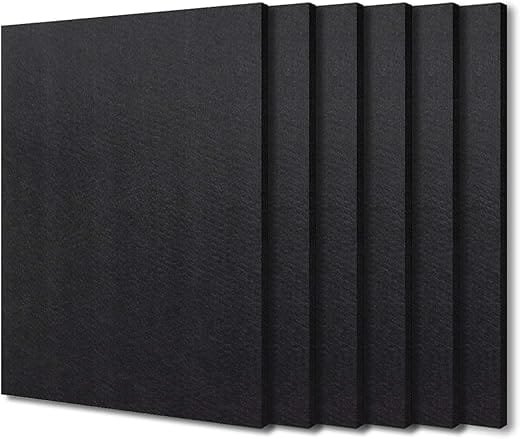This guide outlines the key differences between noise cancellation and noise isolation, offering practical strategies for effectively using noise-canceling headphones. It emphasizes the importance of proper usage to enhance your audio experience, whether you’re traveling, working, or seeking relaxation. By following the step-by-step instructions, you will learn how to optimize the performance of your headphones, ensuring you enjoy the full benefits of reduced background noise and improved sound quality.



Choose the Right Headphones
When selecting noise-canceling headphones, identify your primary use case first. Are you using them for commuting, working from home, or enjoying music in a noisy environment? Comfort is a priority, so try on different styles, whether over-ear or in-ear, and see which fits best for extended wear. For example, over-ear headphones often provide better cushioning and a snug fit, making them great for long listening sessions, while in-ear options are more portable and convenient for travel.
Evaluate sound quality by listening to various audio genres and checking for clear bass, mids, and highs. Look for models with high ratings in sound performance, like the Sony WH-1000XM4 or Bose QuietComfort 35 II, both known for their exceptional noise cancellation and audio quality. Battery life is another critical factor—opt for headphones that can last at least 20 hours on a single charge, ensuring they won’t run out of juice during your daily routine. Research user reviews and expert opinions to gather insights on durability and overall performance, helping us make a well-informed decision that fits our lifestyle and preferences.
Charge Your Headphones
Ensure your noise-canceling headphones are fully charged before use. Connect them to a power source using the provided charging cable. Plug one end of the cable into the headphones and the other end into a USB wall adapter or a computer. Look for the indicator light on the headphones; it usually changes color or turns off when the device is fully charged. Wait patiently for the light to signal that the charging process is complete. This step is essential to prevent any interruptions while enjoying your music or taking calls.
Check the battery level before you head out. If the headphones have a companion app, open it to monitor the battery status easily. Allow sufficient charging time—typically, a few hours will do the trick. Once fully charged, unplug the headphones from the power source, so you’re ready to enjoy a seamless audio experience without worrying about battery life.
Adjust the Fit
Put on your headphones and start by adjusting them to achieve a snug fit. For over-ear headphones, ensure that the ear cups completely envelop your ears. This will not only provide comfort but also block out external noise effectively. For in-ear models, gently insert the earbuds into your ear canals, making sure they create a tight seal. This seal is crucial as it enhances noise cancellation, allowing you to fully immerse yourself in your music or podcast.
- Check for any discomfort; the headphones should feel secure but not tight.
- Adjust the headband of the over-ear headphones for a better fit if necessary.
- Wiggle the in-ear models slightly to confirm that they are properly positioned and creating a good seal.
- Listen for a reduction in outside noise, which indicates that your headphones are fitted correctly.
Activate Noise Cancellation
- Locate the noise cancellation button or switch on your headphones. This is typically found on the ear cup or inline remote, depending on your model.
- Press or toggle the button to activate the noise cancellation feature. You should hear a confirmation sound or see an indicator light that shows the feature is engaged.
- Adjust the noise cancellation level, if applicable. Some headphones allow you to choose between different settings, such as “high,” “medium,” or “low.” Select the level that best suits your environment, whether you’re in a busy café or a quiet room.
- Monitor the effectiveness of the noise cancellation. If you notice that ambient sounds are still distracting, try switching to a higher level of noise cancellation.
Optimize Audio Settings
Connect your headphones to your device using the appropriate method, whether it’s a wired connection or Bluetooth pairing. Ensure you’ve securely plugged in or successfully paired your headphones. Once connected, navigate to the audio settings on your device. This is usually found in the settings menu under “Sound” or “Audio.” From there, locate the equalizer option, which allows us to fine-tune the audio output.
Adjust the equalizer settings by moving the sliders for different frequency ranges, such as bass, midrange, and treble. For example, if we enjoy bass-heavy music, increase the lower frequency (around 60 Hz) while slightly lowering the midrange frequencies (around 1 kHz) to avoid muddiness. Experiment with different configurations, listening to various genres to discover what works best for our ears. Don’t hesitate to save multiple profiles if our listening preferences vary. This process allows us to personalize our audio experience, catering to our unique tastes and ensuring we get the most out of our music or podcasts.
Maximize Your Listening Experience
In conclusion, by implementing the strategies we’ve discussed, we can truly maximize the benefits of our noise-canceling headphones. Selecting the ideal model, utilizing the features effectively, and maintaining our headphones will not only elevate our listening experience but also create a serene environment wherever we are. So, let’s embrace the tranquility and enjoy our favorite sounds with clarity and peace!

